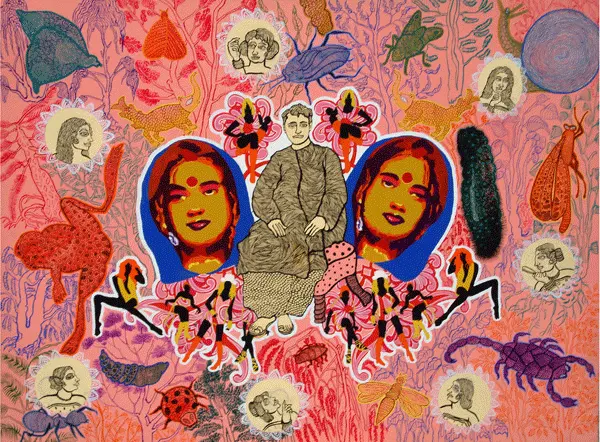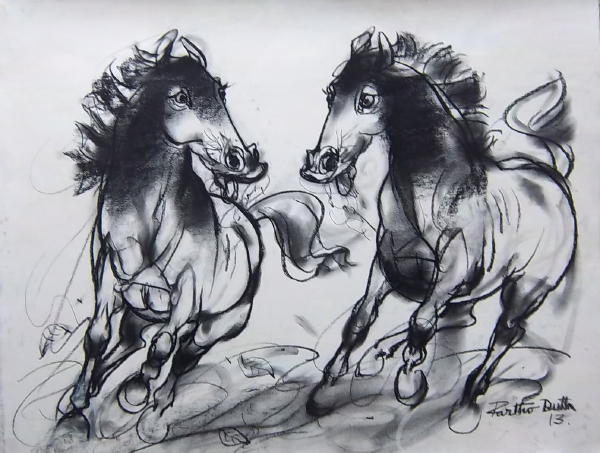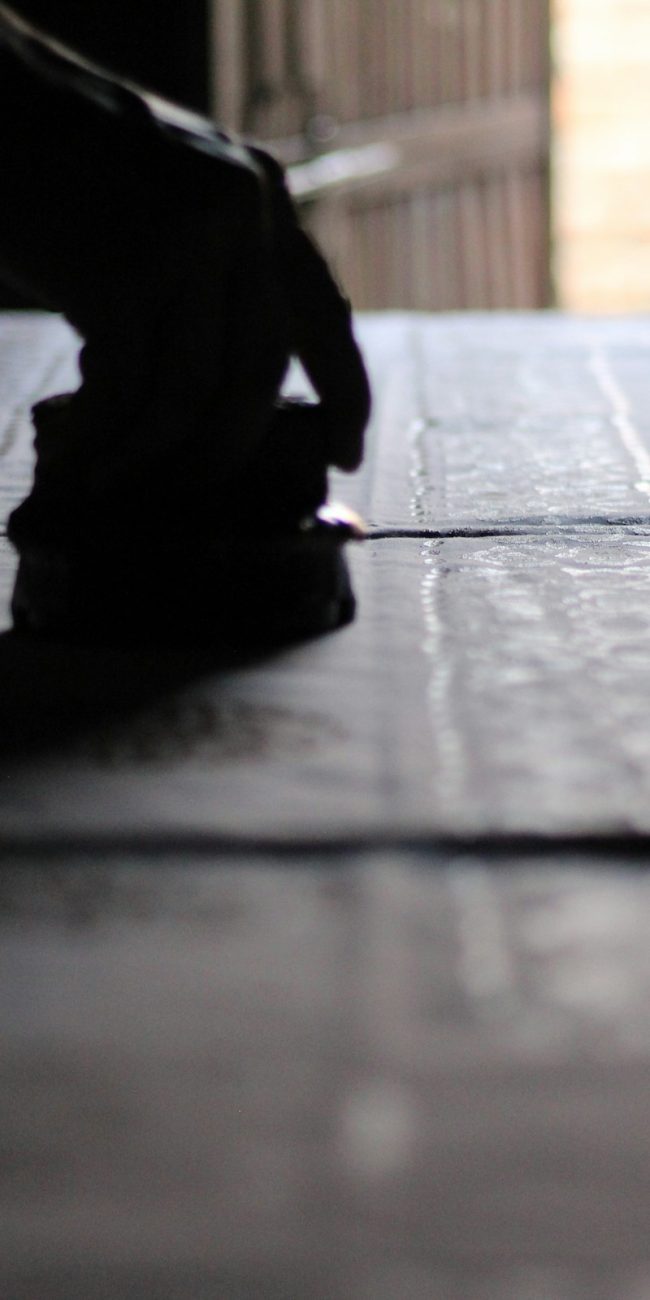
The Evolution of Contemporary Indian Art
What is Contemporary Indian Art?
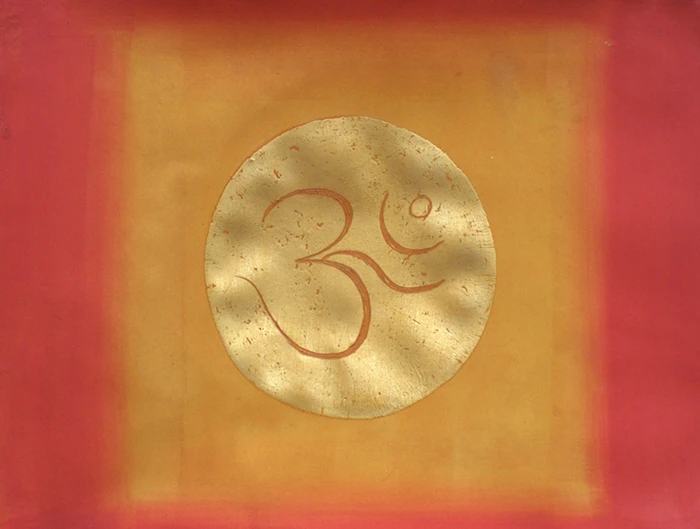
(Sidharth, OM (2009), Natural Pigments on Handmade Paper, 25 x 37)
Contemporary Indian art refers to artworks created from the mid-20th century to the present day. It includes a wide range of mediums such as painting, sculpture, installation art, photography, and digital art. Unlike traditional Indian art, which often followed set patterns and themes, contemporary Indian art is diverse, fluid, and experimental. It blends elements from India’s ancient past with global influences, tackling issues like identity, politics, spirituality, and social change.
The Early Beginnings

(Manjit Bawa, Pen on Paper, 7 x 9)
The roots of contemporary Indian art can be traced back to the British colonial period, when India was introduced to Western artistic styles and techniques. The Bengal School of Art emerged in the early 20th century, led by Abanindranath Tagore. Artists of this school rejected the academic realism brought by British rule and revived classical Indian styles like Ajanta frescoes and Mughal miniatures. This was one of the first movements where Indian artists began to assert their cultural identity through art.
However, as India moved toward independence in 1947, a new wave of artists started exploring themes of nationalism, individualism, and modernity. Artists like M.F. Husain, S.H. Raza, and F.N. Souza – part of the Progressive Artists Group – played a pivotal role in shaping modern Indian art. They experimented with abstract and figurative styles, blending traditional Indian forms with Western modernism.
Post-Independence Modernism
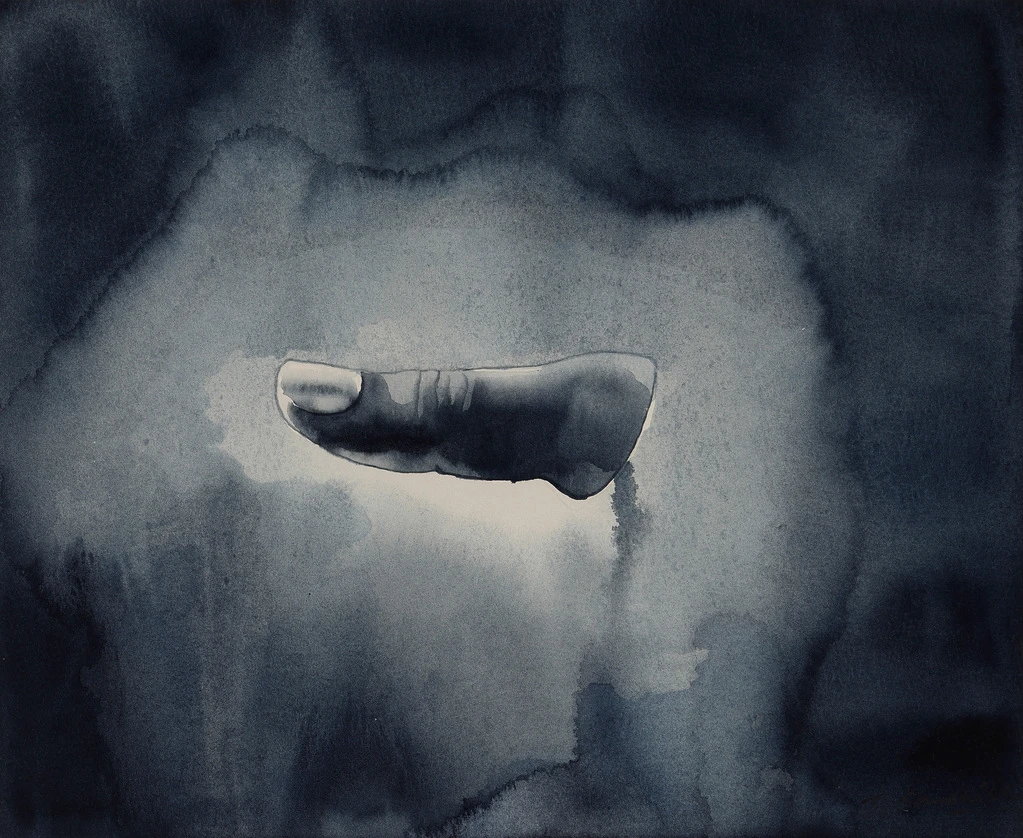
(T V Santhosh, Watercolor on paper, 13.75 x 17)
In the decades following independence, Indian art underwent significant transformations. The political and social upheavals of the 1950s and 60s created a sense of urgency among artists to redefine what it meant to be Indian in a modern world. Artists began breaking away from the nostalgic revival of traditional forms and embraced new ideas of modernism.
This period saw the rise of abstract expressionism, with painters like V.S. Gaitonde, who used minimal forms and muted colors to explore the depths of human emotion. Sculptors like Ramkinkar Baij and Tyeb Mehta began experimenting with materials and shapes, creating bold, experimental works that expressed the rapidly changing society around them.
The Global Presence
By the late 20th century, Indian art gained global recognition, with artists like Subodh Gupta, Anish Kapoor, and Bharti Kher showcasing their work internationally. Globalization introduced new mediums like photography, video, and performance art, with artists exploring themes of consumerism, environmentalism, and societal issues. Indian contemporary art increasingly became a platform for addressing political and social topics such as gender inequality, caste, and globalization.
Popular Contemporary Art Forms in India

(SH Raza, Acrylic On Canvas, 8 x 10)

(Ram Kumar, Pen & Ink on Paper, 14 x 19)

(Akbar Padamsee, Pencil on Paper, 8 x 10)
Contemporary Indian art is rich in diversity. Here are some of the most popular art forms that define this era:
- Abstract Art: Abstract art focuses on colors, shapes, and forms without representing specific objects. Artists like Vasudeo Gaitonde and Ram Kumar pioneered this style in India. It allows artists to express emotions and ideas in a non-literal way.
- Installations and Conceptual Art: Installation art involves creating 3D artworks that interact with the space, like Subodh Gupta’s works with everyday objects. Conceptual art emphasizes the idea behind the art, with artists like Nalini Malani exploring themes like gender and violence.
- New Media Art: New media art uses technology like digital art, video, and sound. Artists explore themes related to technology itself, such as virtual reality or social media. It’s a growing trend in contemporary Indian art.
- Photography: Photography captures India’s socio-political landscape, with artists like Raghu Rai and Dayanita Singh leading the way. It has evolved into a versatile medium, with experimentation in mixed media and digital manipulation.
- Street Art and Graffiti: Street art has become popular in Indian cities like Delhi and Mumbai. Artists like Daku and Yantr use graffiti to comment on social and political issues, transforming public spaces into platforms for expression.
Future of Contemporary Indian Art
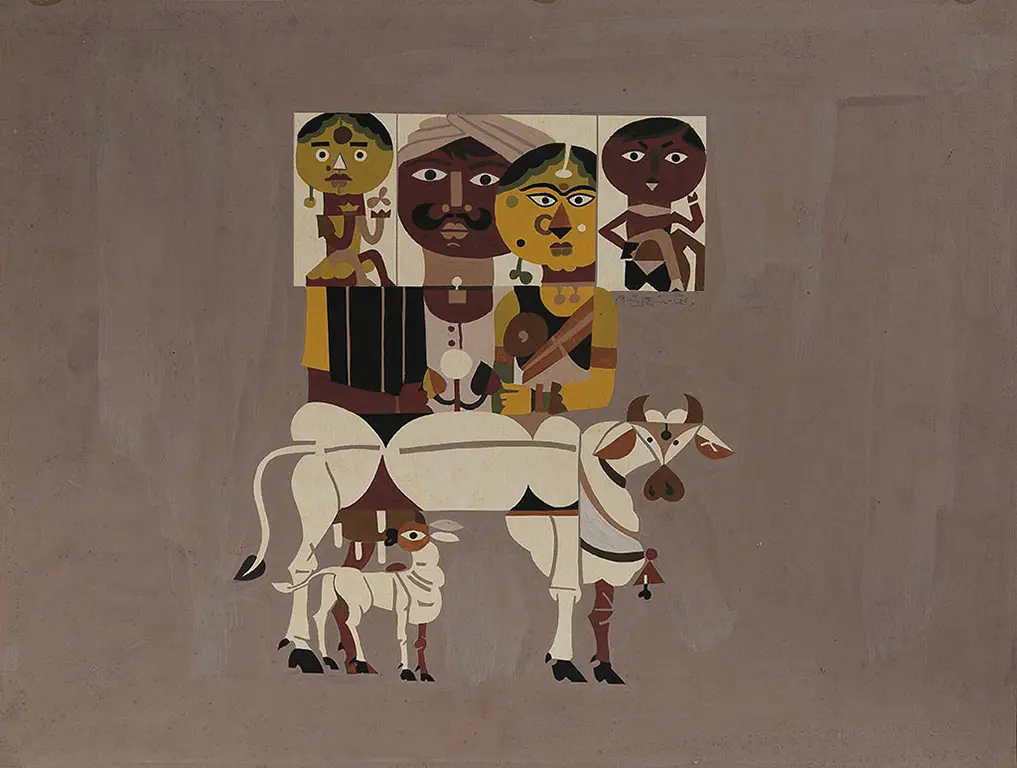
(Laxma Goud, Gouache on Mount board, 13 x 17)
Indian art is rapidly evolving, driven by technology, social media, and global platforms, which have expanded its reach and visibility. Artists are no longer limited by geographic boundaries or traditional mediums, allowing for experimentation and innovation on a global scale. Contemporary Indian art blends ancient traditions with modern influences, creating a rich fusion of local and international ideas.
Artists are exploring new materials and techniques to reflect the complexities of today’s world, addressing themes of identity, culture, and social change. With more emerging artists gaining international recognition, Indian art is positioned to play a significant role in the global art scene, pushing the boundaries of creativity and expression. The future of Indian contemporary art looks bright and dynamic.
Conclusion
The evolution of contemporary Indian art shows the creativity and resilience of Indian artists. Starting from traditional roots, Indian art has become a diverse expression of the country’s culture and identity. Through various forms like abstract paintings, conceptual installations, and digital art, artists are pushing boundaries and making Indian art a vibrant part of the global scene.
As contemporary Indian art evolves, it will inspire future generations by connecting tradition with modernity and showcasing India’s role in artistic innovation worldwide.




